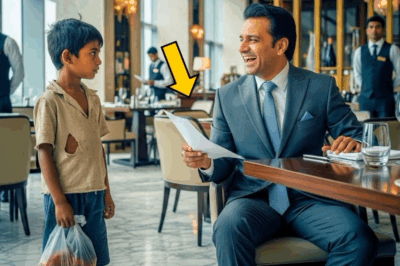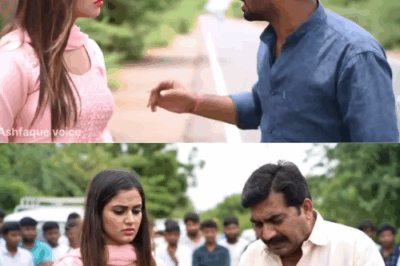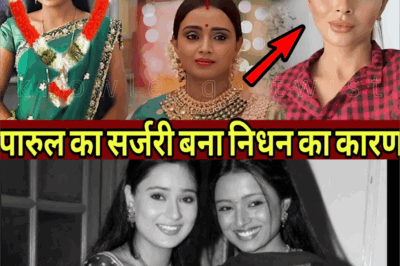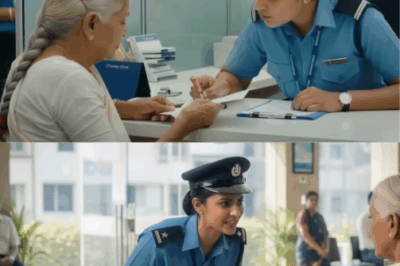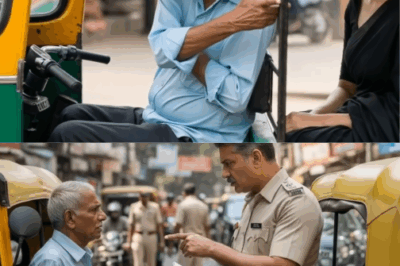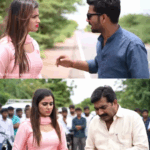दुलारचंद पर अनंत सिंह ने चलाई गोली, हुआ चुकाने वाला खुलासा! Dularchand Yadav Murder Case
.
.
“Shot on Anant Singh’s Orders?” The Dularchand Yadav Murder Case Roils Mokama Ahead of Elections
Introduction
Mokama, Bihar, has been thrust into a political firestorm after the killing of Dularchand Yadav, a once-formidable local figure long embedded in the region’s power networks. The incident—occurring amid an already charged pre-election atmosphere—has sparked a torrent of accusations, counteraccusations, and raw public sentiment. On one side, supporters of Jan Swaraj candidate Piyush Priyadarshi allege that Dularchand was shot and then run over during a clash with the convoy of JDU candidate and strongman Anant Singh. On the other, Anant Singh’s camp insists they were attacked first and are being framed in a conspiracy designed to swing the polls.
As investigators comb through forensic clues and testimonies, the case has transcended a law-and-order episode, morphing into a symbolic battle over prestige, dominance, and the very character of politics in Mokama. This report assembles the key claims, known facts, and the stakes for all involved—while underscoring what remains unverified and under investigation.

A Clash at Khushahal Chak: From Convoy Face-Off to Fatality
According to multiple accounts, the confrontation erupted near Khushahal Chak when two convoys converged:
One belonged to Jan Swaraj’s Piyush Priyadarshi, who was on an intensive outreach drive across the Tal region.
The other was associated with Anant Singh, the JDU nominee widely known by his moniker “Chhote Sarkar,” and a dominant figure in Mokama’s political lore.
Witnesses describe a familiar but dangerous script in such contested spaces: heated words, jostling vehicles, then sudden chaos. Bricks and stones were reportedly hurled, windshields shattered, and panic spread. Within this turmoil stood Dularchand Yadav—an ally-turned-critic of Anant Singh—who, minutes later, lay grievously injured. He was soon declared dead.
Priyadarshi went live on Facebook, teary-eyed, in front of smashed cars, alleging a targeted assault on his convoy. He vowed that “the poor won’t be crushed,” promising a political and legal reckoning. The images galvanized his supporters and dominated local feeds.
Who Was Dularchand Yadav?
Dularchand’s name carries weight in Mokama:
In the 1980s and 1990s, he was counted among the Tal area’s most influential figures, blending local clout with political ambitions.
Patna Police arrested him in 2019, describing him as a “notorious criminal,” a label that cemented his complex reputation.
He once connected with RJD supremo Lalu Prasad Yadav and contested the Mokama assembly seat, though unsuccessfully.
For years, he maintained close ties with Anant Singh and even praised him publicly.
That equation cracked this year. Dularchand switched to back Piyush Priyadarshi and became caustically critical of Anant Singh, especially on social media. Tensions escalated following a TV appearance where Dularchand made personal insinuations and caste-laced remarks about Anant Singh’s wife, now an MLA. The comments polarized Mokama, with supporters applauding his candor and detractors condemning his rhetoric as beyond the pale.
Explosive Allegations: “Anant Ordered the Shot”
In the aftermath, grief and anger among Dularchand’s family boiled over into direct allegations:
Relatives claimed Dularchand had received threats before the incident.
They alleged he was shot in the leg and then run over by a car.
One family member accused Anant Singh of directing an associate—named locally as Karmveer—to “fire the shot.”
These claims have ignited social media, where the refrain of “Dularchand’s killer must hang” trended in certain circles. The narrative paints the incident as a political execution designed to settle scores and intimidate rivals.
Anant Singh categorically denied the allegations. He asserted that his convoy came under attack first from Jan Swaraj workers who pelted stones, injuring supporters and damaging multiple vehicles. Importantly, he shifted the focus to another heavyweight, alleging that Surajbhan Singh orchestrated the “entire plan” and implying that Dularchand’s death was engineered to create an electoral backlash against him. According to Anant, he had already moved away from the site when the worst of the violence unfolded.
The Police and Forensic Trail
Law enforcement has responded with visible force and procedural steps:
Heavy police deployment and temporary camps have been established in sensitive localities to deter flare-ups.
An FSL (forensic science) team examined damaged vehicles, collected bullet casings, and documented impact marks.
The Patna SSP stated that Dularchand had a gunshot wound in the leg and that his body was found in a vehicle; a postmortem would clarify cause and sequence of injuries.
A named FIR has reportedly been filed, including Anant Singh and four others, escalating the political stakes.
Officials caution that social media narratives cannot substitute for evidence. They promise that the case will move to court once the forensic and testimonial groundwork is complete.
Politics of Power and Prestige: Mokama’s Enduring Grammar
Mokama’s political terrain is unlike many others in Bihar:
Clout is measured not just in party symbols but in perceived capacity to protect supporters and enforce local order.
Rivalries carry deep personal and communal undertones—prestige and dominance matter as much as policy.
Election season often sharpens these edges, turning proximity into provocation.
In this environment, Dularchand’s death resonates as a blow to community pride and a trigger for rallying cries. Jan Swaraj supporters have framed it as an attack on democracy and the silencing of a bold voice. JDU supporters, publicly restrained, maintain that the truth will vindicate their leader and expose a politically choreographed framing.
The Street Mood: Fear, Fury, and Mobilization
On the ground:
Villages are tense; many residents are both angry and afraid.
Armed police patrols are visible, and checkpoints have multiplied.
At tea stalls and markets, the talk is blunt: “Mokama doesn’t just vote for candidates; it votes for honor and strength.”
Dularchand’s funeral drew large crowds. People remembered him as outspoken, unafraid, and polarizing. Some argued that his fearless style made enemies; others insisted that his voice was silenced to maintain an unjust order. Either way, the sense that “everything can change in a moment” has sunk in—friendships, loyalties, and fortunes pivot fast in Mokama’s political game.
Social Media: Fury Versus Forensics
Online, battle lines are clear:
One camp sees the killing as proof that defecting from entrenched power invites deadly retribution.
The other argues that rivals are weaponizing a tragedy to manufacture sympathy and destabilize an opponent’s campaign.
Old videos of Dularchand’s fiery remarks circulate as exhibits for both sides—either as context for provocation or as post hoc rationalization for violence. But investigators warn: virality is not veracity. The weight will rest on forensic findings, ballistic reports, call records, CCTV or phone videos, and consistent eyewitness testimony.
The Named FIR and Legal Trajectory
The filing of an FIR naming Anant Singh and five others has shifted the matter decisively into the legal arena:
If custodial interrogations and technical evidence—like tower dumps, GPS traces, and weapon recoveries—align with the allegations, arrests and charges may follow swiftly.
If evidence points to a crowd-triggered escalation without command responsibility—or if alternative conspirators emerge—the narrative could tilt away from the initial accusations.
The postmortem and ballistic correlation—matching any recovered weapon to the bullet injury—will be pivotal.
Courts will look for a coherent timeline: threat allegations, convoy positions, first act of aggression, point of gunfire, vehicle movements, and the precise circumstances of Dularchand’s fatal injuries.
Stakes for the Key Players
Piyush Priyadarshi: The emotional force of his live-stream, coupled with a narrative of standing up for the Tal’s “common people,” could translate into sympathy and support. But long-term electoral gains will depend on whether his camp can pivot from grief to an agenda that promises security without perpetuating cycles of retaliation.
Anant Singh: A named FIR and a swirl of accusations are serious liabilities in an election season. His counterstrategy—deny, deflect toward a broader conspiracy, and project composure—aims to retain core supporters who equate his persona with order and strength. The legal outcome will weigh heavily on his candidacy and long-standing image.
Surajbhan Singh: Brought into the controversy by Anant’s allegations, he could become a formal subject of inquiry. Even absent charges, the political optics could force his camp to address questions of motive and means.
Known, Unknown, and What to Watch
What is known:
A convoy confrontation occurred near Khushahal Chak involving camps linked to Priyadarshi and Anant Singh.
Violence escalated, vehicles were damaged, and multiple injuries were reported.
Dularchand Yadav suffered a gunshot wound and was later found dead; a postmortem is pending or underway.
Police have initiated an investigation, collected forensic evidence, and filed a named FIR.
What remains unknown:
Who fired the fatal shot, and under what instruction—if any.
Whether Dularchand was deliberately run over or injured amid chaos and then transported.
The precise chronology of provocation, response, and escalation.
The veracity of claims implicating Anant Singh directly or pointing to an alternative mastermind.
What to watch:
Postmortem findings and ballistic matches.
Digital evidence: call detail records, location data, and video corroboration.
Consistency across eyewitness statements.
Whether arrests follow the FIR and how custodial interrogations shape the narrative.
Electoral Implications: Order, Fear, and the “Security Vote”
The incident may reframe the election in Mokama and beyond:
Law and order could eclipse other issues, with voters prioritizing candidates who promise stability.
Fear can depress turnout in flashpoint localities—but outrage can also mobilize new participation.
Narrative control will matter: is this a story of a silenced dissenter, an engineered frame-up, or a tragic byproduct of unmanaged political brinkmanship?
Parties are recalibrating. Jan Swaraj is channeling grief into moral momentum. The JDU machine is tightening ranks, signaling confidence that an evidence-led probe will undercut the charges. Opposition voices are pressing the administration on how firearms circulate under the Model Code of Conduct and whether policing is even-handed.
Conclusion: Justice Over Noise
The Dularchand Yadav case embodies the hard truths of Mokama’s politics: alliances are brittle, words can be incendiary, and street confrontations can turn lethal in minutes. The current storm is fueled by grief, speculation, and strategic messaging—but the path to accountability runs through evidence.
Three imperatives now loom:
For investigators: establish a clear timeline anchored in forensics and corroborated testimony.
For political actors: resist turning grief into a blunt instrument and allow due process to proceed.
For the public: hold space for facts to emerge, recognizing that virality is not proof.
Whether courts find direct culpability or a broader conspiracy—or determine a tragic spiral without command responsibility—the outcome will reverberate through Mokama’s electoral calculus. In a season when honor, fear, and prestige collide with the ballot box, the demand from the street is simple but profound: let the law speak louder than the loudest slogans.
.
News
अमीर चेयरमैन ने एक अनाथ लड़के को अपना इकलौता खाना एक आवारा कुत्ते के साथ बांटते हुए देखा …
अमीर चेयरमैन ने एक अनाथ लड़के को अपना इकलौता खाना एक आवारा कुत्ते के साथ बांटते हुए देखा … कहते…
“मैं हज़ार डॉलर में अनुवाद करूंगा” — भिखारी बोला, अमीर हंसा… फिर जो हुआ, सब दंग रह गए 💔✨
“मैं हज़ार डॉलर में अनुवाद करूंगा” — भिखारी बोला, अमीर हंसा… फिर जो हुआ, सब दंग रह गए 💔✨ सड़क…
IPS मैडम के ऊपर कीचड़ क्यों डाला ? फिर उसके बाद जो हुआ।
IPS मैडम के ऊपर कीचड़ क्यों डाला ? फिर उसके बाद जो हुआ। सुबह की हल्की धुंध और ट्रैफिक की…
पारुल चौहान का क्यों हुआ अचानक निधन? Parul chohan Dea*th News viral video? Parul chohan ||
पारुल चौहान का क्यों हुआ अचानक निधन? Parul chohan Dea*th News viral video? Parul chohan || . . Clearing the…
DM की माँ जब पैसा निकालने बैंक गई तो भिखारी समझकर स्टाप ने लात मारा,फिर जो हुआ..
DM की माँ जब पैसा निकालने बैंक गई तो भिखारी समझकर स्टाप ने लात मारा,फिर जो हुआ.. सुबह का समय…
IPS मैडम को आम लड़की समझ कर Inspector ने बीच सड़क पर छेड़ा फिर Inspector के साथ जो हुआ।
IPS मैडम को आम लड़की समझ कर Inspector ने बीच सड़क पर छेड़ा फिर Inspector के साथ जो हुआ। सुबह…
End of content
No more pages to load


